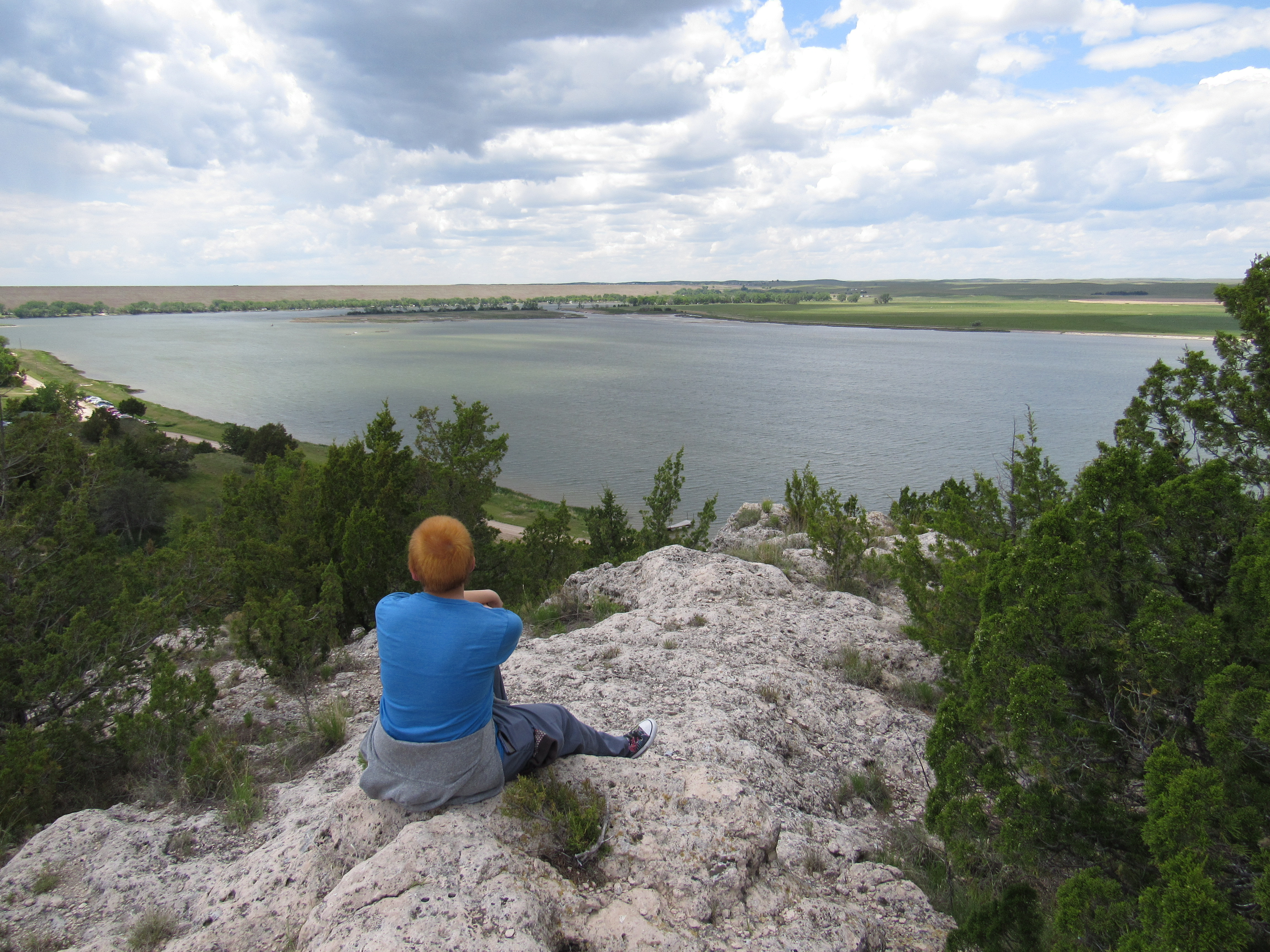Let us acknowledge and honor the Pawnee, Ponca, Oto-Missouria, Umonhon, Dakhota, Lakhota, Arapaho, Cheyenne, and Kaw Peoples, as well as the relocated Ho-Chunk, Iowa, and Sac and Fox Peoples, upon whose homelands now reside the campuses and programs of the University of Nebraska, a "land-grant" institution. Let us recognize the legacies of violence, displacement, and survival that bring us here this semester.
FULFILLS:
ETHN 191
PREREQUISITES:
Students must have a declared minor in Indigenous Studies or a declared major in Ethnic Studies with an Indigenous Studies option. We will waive these requirements for UNITE students or others who can “demonstrate substantive experiential education".
ABOUT THE INSTRUCTOR:
Professor Tom Gannon (Lakhota), UNL English & Indigenous Studies
Professor Angel Hinzo, (Ho-Chunk), UNL History & Indigenous Studies
Professor Liahnna Stanley, (Poarch Creek), UNL Communication Studies & Indigenous Studies
COURSE DESCRIPTION:
Located next to Lake Ogallala and Lake McConaughy and at the junction of the Nebraska Sandhills and the Western High Plains, Cedar Point is of course a wonderful place for biological studies. But this microcosm of the Great Plains is also at the center of an entire Indigenous history—note, for instance, the very name of the nearby town and lake “Ogallala,” a tribute (of sorts) to the historical presence of the Lakota people. This course proposes a Native re-centering of Cedar Point, via a tripartite set of strategies, as indicated by the course’s subtitle(s). Firstly, students will consider how they locate themselves in relation to the environment and interrogate the possibilities of reclaiming “Sustainable Relations” to envision a decolonial future. Course readings will discuss frameworks of Indigenous knowledge and traditional ecological knowledge (TEK) to consider what is needed to create a future that centers these frameworks. Secondly, “Life Writing” will develop the intersection of self and place and history (and other animals) via an exploration and expansion of one’s sense of identity and place within the framework of an ongoing Indigenous history. Some of the course’s readings are aimed at fostering this self-reflection—and to model such self-reflective writing. And finally, students will have the opportunity to explore how they would reimagine Cedar Point to center Indigenous experiences and what should be included in “(Re)making Public History” in the region. Some of the course’s readings will include how Indigenous communities are re-mapping spaces and making history available to the public. Course readings will all be available as PDFs online, and they will be supplemented by field trips to nearby sites of historical interest and by films of historical/regional relevance.
Course Information Lists:
Course readings will be selected from the following
- Fort Laramie Treaties, of 1851 & 1868
- Nicholas Black Elk: “At the Soldiers Town,” “Wasichus in the Hills,” “The Rubbing Out of Long Hair,” “Walking the Black Road,” and “The Killing of Crazy Horse” (chapters 5, 7, and 9-11 of Black Elk Speaks [1932])
- Luther Standing Bear: “Indian Wisdom: Nature, Religion, Ceremony” (from Land of the Spotted Eagle [1933])
- Linda Hogan: “What Holds the Water, What Holds the Light” and “Stories of Water” (from Dwellings: A Spiritual History of the Living World [1996])
- Winona LaDuke: excerpts from The Winona LaDuke Reader: A Collection of Essential Writings [2002]
- Leanne Betasamosake Simpson: excerpts from As We Have Always Done (2017)
- Danika Medak-Saltzman: “Coming to You from the Indigenous Future: Native Women, Speculative Film Shorts, and the Art of the Possible” (Studies in American Indian Literatures [2017])
- Dallas Hunt: “‘In Search of Our Better Selves’: Totem Transfer Narratives and Indigenous Futurities” (American Indian Culture & Research Journal (2018])
- Laura Harjo: excerpts from Spiral to the Stars: Mvskoke Tools of Futurity (2019)
- Joshua Whitehead, ed.: excerpts from Love After the End: An Anthology of Two-Spirit and Indigiqueer Speculative Fiction (2020)
- LANDBACK Manifesto (2021) < https://landback.org/manifesto/ >
- Roxanne Dunbar-Ortiz: excerpts from Not a Nation of Immigrants (2021)
- Sikowis (Christine Nobiss): “End-Stage Iowa: Big-Ag’s Sacrifice Zone and Indigenous Resistance” (2021) < https://www.greatplainsaction.org/single-post/end-stage-iowa >
- Joshua Whitehead: excerpts from Making Love with the Land (2022)
- Tom Gannon: “June 2006, Crazy Horse Memorial: Turkey Vulture” and “June, 2012, Custer State Park: Canyon Wren” (from Birding While Indian: A Mixed-Blood Memoir [2023; will provide PDFs])
- Local tourist & naturalist brochures
Short Films
- The Rocket Boy by Donavan Seschillie (2010)
- Hoverboard (Sydney Freeland, 2012)
- "The 6th World" (Futurestates episode, Nanohab Becker, 2012)
- Wakening (Danis Goulet, 2013)
- Biidaaban (The Dawn Comes) (Leanne Simpson, 2018)
Possible Field Trips
- Ash Hollow State Park
- Fort Robinson State Park
- Chimney Rock, Courthouse Rock, and Jail Rock
- local historical markers
Possible Film Screenings
- Skins (2002)
- Wounded Knee (Part 5 of We Shall Remain) (2009)
- Mekko (2015)
- Awake: A Dream from Standing Rock (2017)
- Blood Quantum (2019)
- Gather (2020)
- Night Raiders (2021)
- Prey (2022)
- War Pony (2022)
- Killers of the Flower Moon (2024)
Grading:
Students will demonstrate their understanding of course materials by active class participation, daily journaling, and an integrative final project:
- 25% Participation
- 25% Daily Journal
- 50% Final Project
